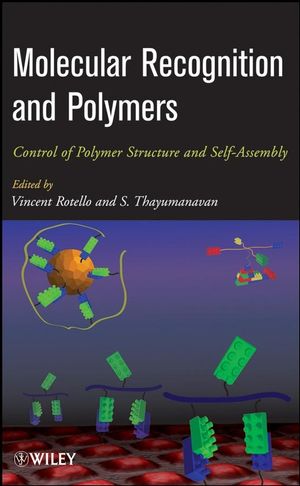Molecular Recognition and Polymers: Control of Polymer Structure and Self-AssemblyISBN: 978-0-470-27738-6
Hardcover
492 pages
September 2008
 |
||||||
State-of-the-art techniques for tapping the vast potential of
polymers
The use of specific non-covalent interactions to control polymer structure and properties is a rapidly emerging field with applications in diverse disciplines. Molecular Recognition and Polymers covers the fundamental aspects and applications of molecular recognition—in the creation of novel polymeric materials for use in drug delivery, sensors, tissue engineering, molecular imprinting, and other areas. This reference begins by explaining the fundamentals of supramolecular polymers; it progresses to cover polymer formation and self-assembly with a wide variety of examples, and then includes discussions of biomolecular recognition using polymers.
With chapters contributed by the foremost experts in their fields, this resource:
The use of specific non-covalent interactions to control polymer structure and properties is a rapidly emerging field with applications in diverse disciplines. Molecular Recognition and Polymers covers the fundamental aspects and applications of molecular recognition—in the creation of novel polymeric materials for use in drug delivery, sensors, tissue engineering, molecular imprinting, and other areas. This reference begins by explaining the fundamentals of supramolecular polymers; it progresses to cover polymer formation and self-assembly with a wide variety of examples, and then includes discussions of biomolecular recognition using polymers.
With chapters contributed by the foremost experts in their fields, this resource:
- Provides an integrated resource for supramolecular chemistry, polymer science, and interfacial science
- Covers advanced, state-of-the-art techniques used in the design and characterization of non-covalent interactions in polymers
- Illustrates how to tailor the properties of polymeric materials for various applications



